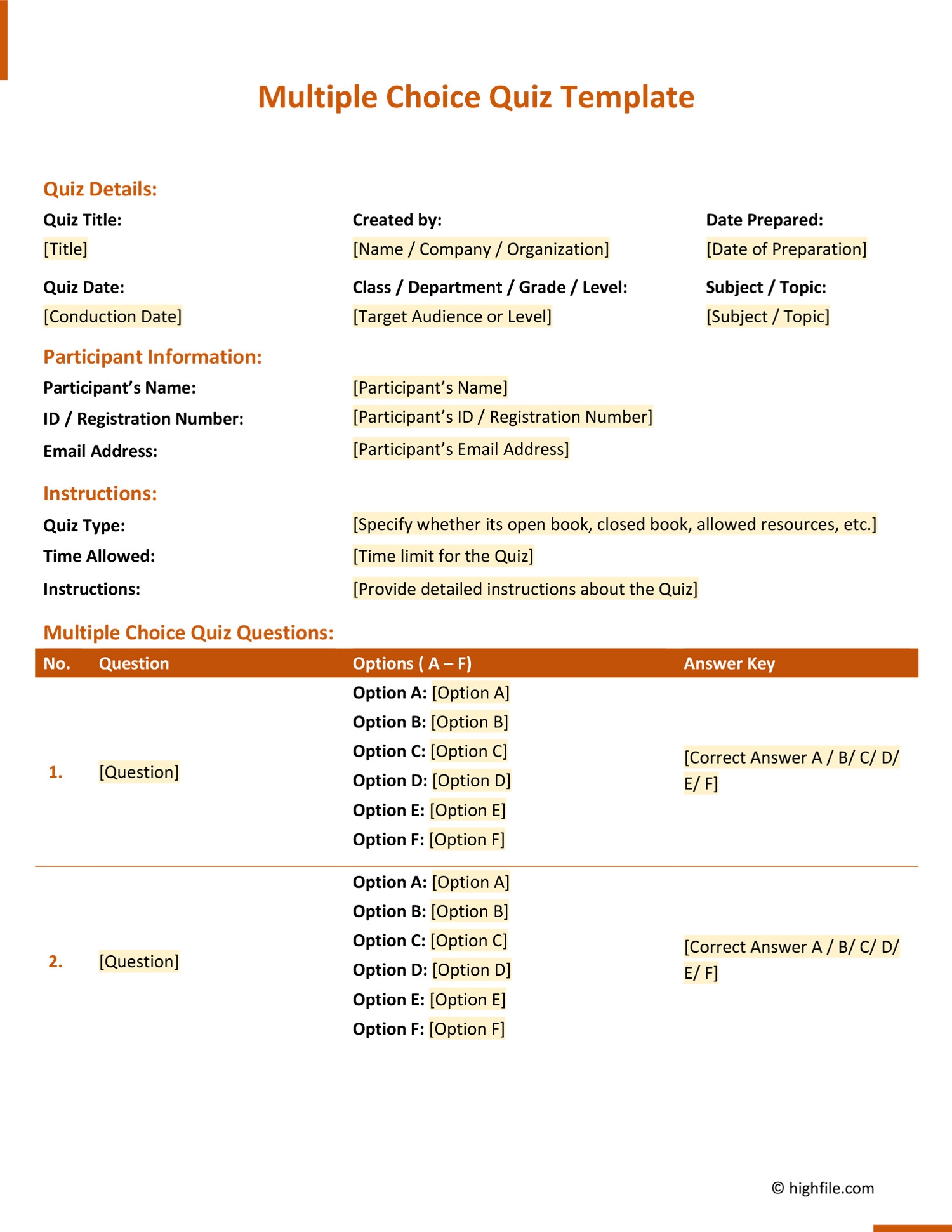Multiple choice quizzes are a popular way to test knowledge on various subjects. They are widely used in schools, universities, and online learning platforms. Creating a multiple choice quiz template can save time and effort when designing quizzes for different topics.
With a well-designed template, you can easily customize the questions, answer choices, and scoring system to suit your needs. This can help streamline the quiz creation process and ensure consistency in the format of your quizzes.
Multiple Choice Quiz Template
When creating a multiple choice quiz template, it is important to consider the following elements:
- Question format: Each question should be clear and concise, with a single correct answer choice.
- Answer choices: Provide a set of plausible answer choices for each question, including the correct answer and distractors.
- Scoring system: Decide on the scoring system for the quiz, such as awarding points for correct answers and deducting points for incorrect answers.
- Feedback: Consider including feedback for each question to explain the correct answer and provide additional information.
By incorporating these elements into your multiple choice quiz template, you can create engaging and informative quizzes that effectively assess knowledge and understanding.
It is also important to test the quiz template before using it with students or participants. This can help identify any errors or inconsistencies in the questions and answer choices, ensuring a smooth and accurate assessment process.
Overall, a well-designed multiple choice quiz template can be a valuable tool for educators, trainers, and quiz creators. It can help streamline the quiz creation process, ensure consistency in quiz format, and provide an effective means of assessing knowledge and understanding on various topics.
With the right template in hand, you can create engaging and informative quizzes that are tailored to your specific needs and objectives.
